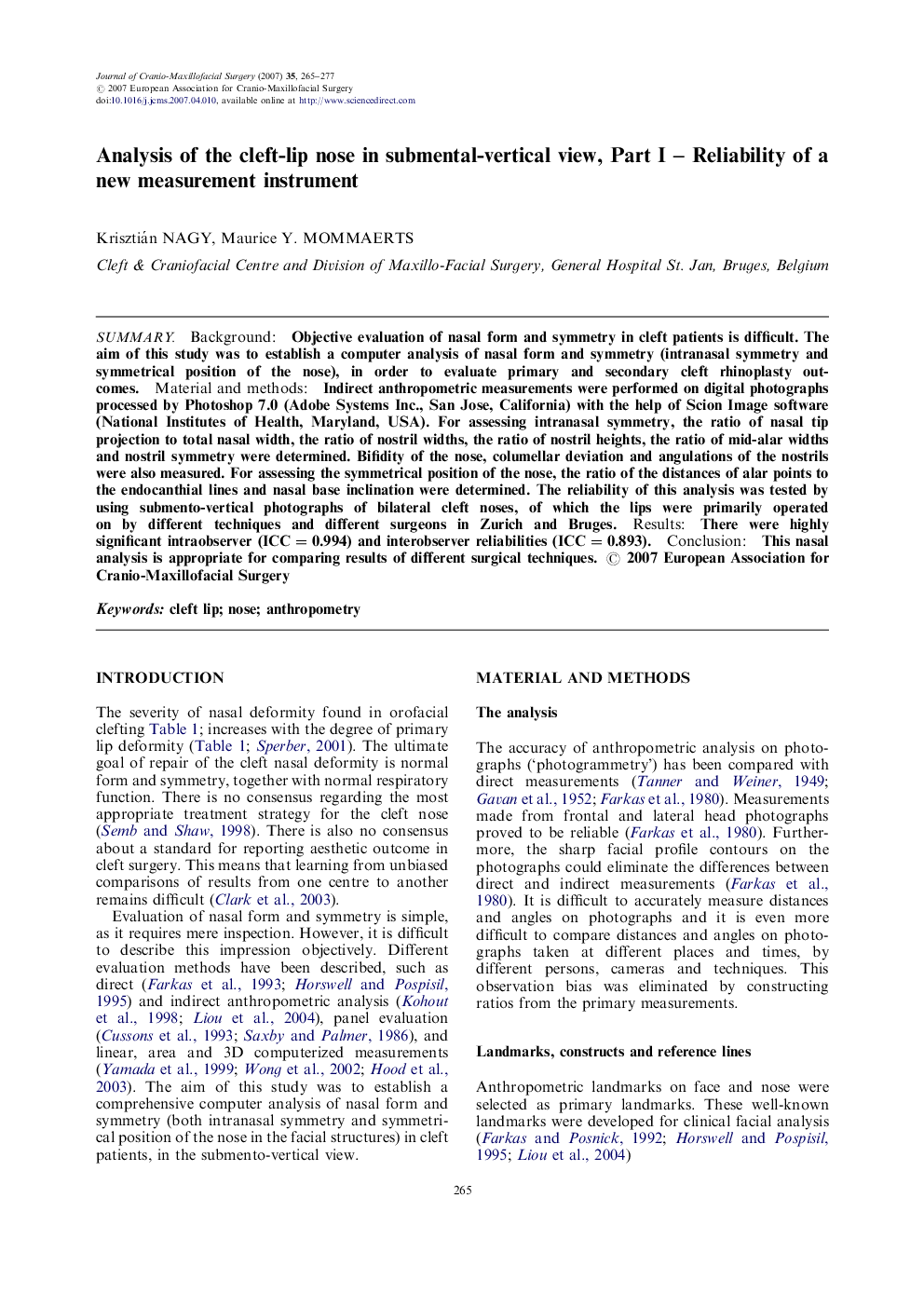| Article ID | Journal | Published Year | Pages | File Type |
|---|---|---|---|---|
| 3144089 | Journal of Cranio-Maxillofacial Surgery | 2007 | 13 Pages |
SummaryBackgroundObjective evaluation of nasal form and symmetry in cleft patients is difficult. The aim of this study was to establish a computer analysis of nasal form and symmetry (intranasal symmetry and symmetrical position of the nose), in order to evaluate primary and secondary cleft rhinoplasty outcomes.Material and methodsIndirect anthropometric measurements were performed on digital photographs processed by Photoshop 7.0 (Adobe Systems Inc., San Jose, California) with the help of Scion Image software (National Institutes of Health, Maryland, USA). For assessing intranasal symmetry, the ratio of nasal tip projection to total nasal width, the ratio of nostril widths, the ratio of nostril heights, the ratio of mid-alar widths and nostril symmetry were determined. Bifidity of the nose, columellar deviation and angulations of the nostrils were also measured. For assessing the symmetrical position of the nose, the ratio of the distances of alar points to the endocanthial lines and nasal base inclination were determined. The reliability of this analysis was tested by using submento-vertical photographs of bilateral cleft noses, of which the lips were primarily operated on by different techniques and different surgeons in Zurich and Bruges.ResultsThere were highly significant intraobserver (ICC=0.994) and interobserver reliabilities (ICC=0.893).ConclusionThis nasal analysis is appropriate for comparing results of different surgical techniques.
